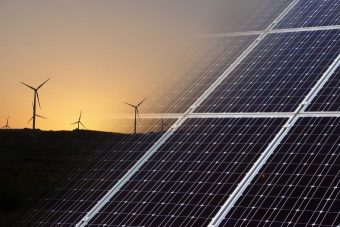
August and September may have seemed like a bit of a washout for those hoping to enjoy a scorching end to the summer, but green energy enthusiasts will be toasting a successful end to the season today with news 2017 was the ‘greenest’ summer on record.
According to new data published today by National Grid, low-carbon power sources – wind, solar, biomass and nuclear – supplied a record level of electricity generation over the summer months.
On average, almost 52 per cent of electricity generation was met by low-carbon sources between June 21 and September 22, up from around 35 per cent four years ago.
The surge in clean power has led to a massive 56 per cent drop in the carbon intensity of grid electricity since summer 2013, from 491 grams of CO2 per kWh to 224 grams of CO2 per kWh, National Grid said.
The update follows a summer of record-breaking achievements for low-carbon power.
In April, the UK had its first working day since the Industrial Revolution where the UK met electricity demand without resorting to coal-fired power. On May 31, a record 25 per cent of UK electricity demand was met solely by solar power, while on June 7 renewables met more than half of the UK’s total electricity demand.
Alongside the seasonal results, National Grid will today also launch what it claims is the “world’s first” tool to predict the carbon intensity of a national grid ahead of time.
Working with WWF and the Environmental Defense Fund (EDF), it hopes the new software will help consumers understand the best times to ramp up their use of grid power.
The forecasts are developed by combining National Grid’s knowledge of the UK electricity system with the latest weather forecasts from the Met Office to help predict how much power will be available from weather-dependant sources such as wind and solar.
The service is the first step in designing new apps and devices that promote demand shifting to greener times of the day, explains Duncan Burt, director of the system operator at National Grid.
“We’re providing our forecast data in a format that allows technology companies to build innovative apps and software that could make a real difference to how and when people use energy,” he said in a statement. “Clear and concise information that can tell you in advance when’s best to turn on the washing machine, load the dishwasher or charge your car for example, is a step in the right direction towards a low carbon future. This technology puts people at the heart of it, helping everyone to use power when it’s greenest, and likely, more cost efficient.”
Gareth Redmond-King, head of climate and energy at WWF, said the new tool was a “game-changer” for the electricity sector. He added that it was now “vital” that so-called time-of-use tariffs are approved for use by government quickly to allow the full emissions-savings enabled by the new data to be realised.
Advocates of smart grid technologies have long argued that cutting energy prices at times when there are high levels of clean power available could have a major impact on overall emissions from the energy sector, while also leading to net savings for customers and utilities alike.
Source: businessgreen.com

